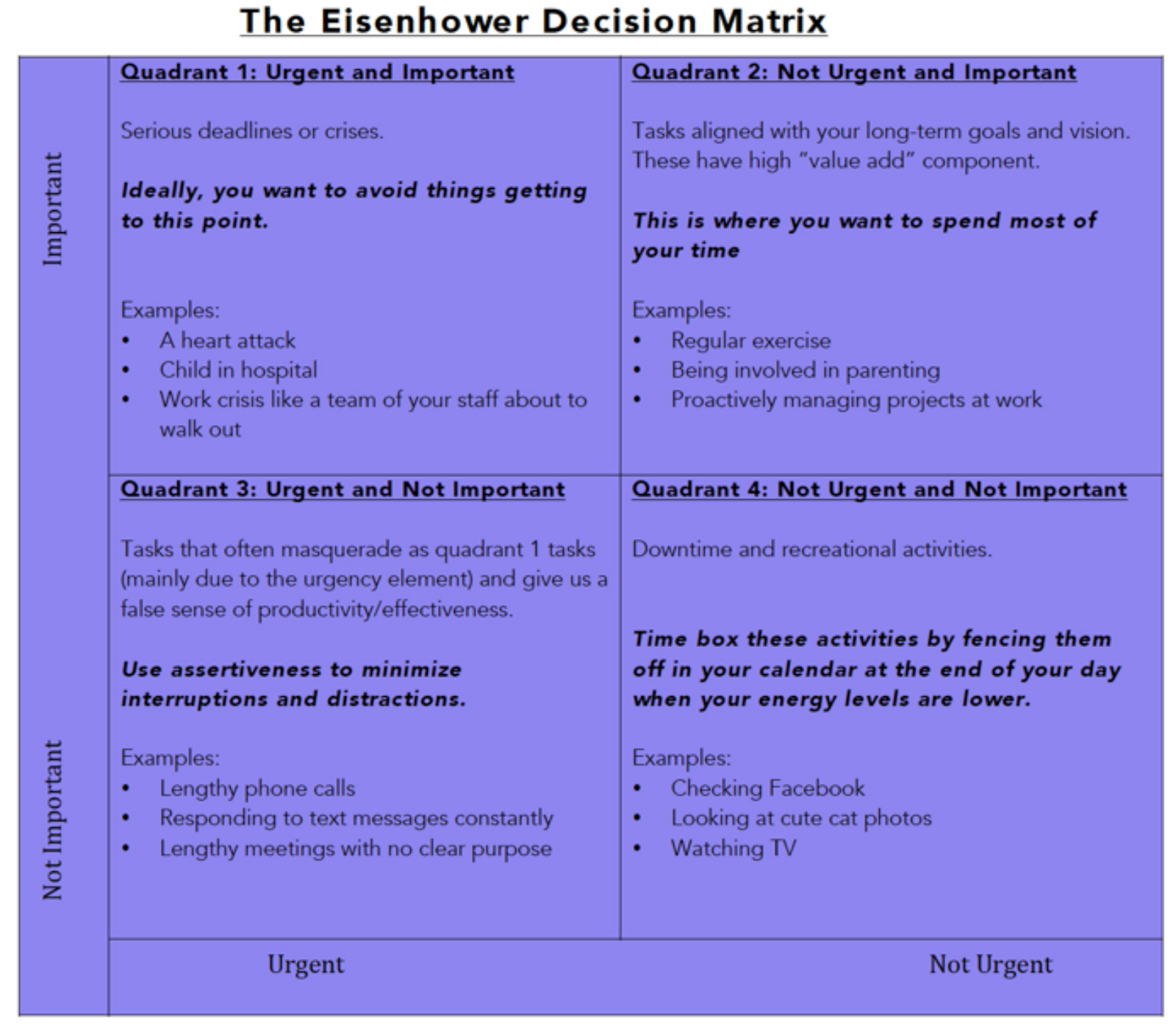Guest blog from Ash Roy of Productive Insights:
Admit it.
You’re overwhelmed.
You’re fighting the good fight. You’re doing everything in your power to look like you’ve got it together.
But the truth?
You’re crumbling inside. You feel like it’s just a matter of time before something snaps.
If this is you, then I’ve got good news.
You’re not alone.
We’re bombarded with hundreds of messages each day. Screaming out at us from various screens. Vying for our attention.
And that email inbox?
Well that’s just a minefield of to dos. Each time we open it we feel like we’re drowning. One look at that overflowing inbox and the plan we walked in with that morning is just a dim distant memory.
Welcome to the information age!
But here’s the thing.
It doesn’t have to be this way, if you can get very clear on one thing.
Beating overwhelm (aka productivity) isn’t about getting more done in less time. It’s about getting the right things done at the right time.
Most of that information you’re drowning is just noise! You know … like the static that disrupts the signal on a radio (remember them?)
Once you learn to filter out the noise, which — according to Pareto’s 80/20 rule — is around 80% of the information assaulting your senses, you’re on your way to freedom from overwhelm.
See, it’s all about identifying the important tasks, prioritizing them, and executing on the ones that matter, in an optimal sequence.
One of the best prioritization tools out there is the Eisenhower decision matrix — the brainchild of former US President Dwight D Eisenhower (later popularized by Stephen Covey in his book “The 7 Habits of Highly Effective People”).
Eisenhower believed that important matters were seldom urgent, and that urgent matters were seldom important.
So by extension, the Eisenhower decision matrix differentiates between urgent and important items as shown in the matrix below.

Quadrant 1: Urgent and Important
The urgent and important tasks require your immediate attention
Think serious deadlines or crisis. You don’t want things getting to this point. You want to have dealt with them well before.
Here are a few examples:
- A heart attack
- Child in hospital
- Crisis at work which could result in you losing your job if not resolved immediately
If you have good systems and protocols in place you won’t find yourself in quadrant 1.
For example, if you stick to regular fitness routine (as we’ll see in the next quadrant) then you’re less likely to have a heart attack.
Sure, you can never completely eliminate all urgent and important tasks, but you can significantly reduce the likelihood of them occurring.
How?
By being proactive and spending more time in quadrant 2.
Quadrant 2: Not Urgent but important
These are tasks that are more aligned to your long-term goals.
Because of the strategic nature of these tasks, and because they don’t involve fire fighting, these tasks tend to align with your overall mission. They have a strong “value add” component.
Some examples:
- Regular exercise
- Been very involved in parenting
- Proactively managing projects at work and developing productive relationships
So using the exercise analogy … If you stick to a regular exercise routine — i.e. execute on tasks while they are important but not yet urgent (Quadrant 2), you’re far less likely to get a heart attack — i.e. You’ve dealt with your health by exercising regularly and averted a (Quadrant 1) crisis – a heart attack.
The key is to spend as much time on quadrant 2 activities as possible.
Note: to do this you need to understand your values and goals to know what’s truly important (as opposed to just urgent but not important).
Quadrant 3: Urgent but Not Important
The third quadrant includes stuff that requires your attention now but isn’t really aligned with your long-term goals.
Now this is the elephant in the room. The real “time-thief”!
Fail to be vigilant and you’ll lose days, months and maybe even years!
These are interruptions or distractions that can hijack your day and take you off on tangents that lead nowhere.
Some examples:
- Lengthy phone calls (often open-ended discussions)
- Responding to text messages constantly
- Lengthy meetings with no agenda or planned outcomes
According to Stephen Covey, many people spend most of their time on Q3 tasks thinking they’re working on Q1 tasks. These Q3 tasks often involve other people and give us a false sense of purpose and achievement because we walk away with the feeling of having ‘helped someone’.
It’s fine and normal to spend some time each day in the third quadrant. But it’s particularly damaging to spend most of your time in Q3 particularly if you think you’re operating in Q1.
The solution? Ask yourself if you’re being ‘busy’ or ‘effective’. And learn to say “no” often!
Be very selective about tasks that you take on. Plan your day the night before, when you’re emotionally uninvolved, and stick to the plan unless you’re hit with an emergency.
Quadrant 4: Not Urgent and Not Important
Think downtime and recreational activities.
Examples include:
- Checking Facebook
- Looking at cute cat photos
- Watching TV shows
Don’t get me wrong. You need downtime. We all do.
But fence off these Q4 activities towards the end of the day in your calendar so they don’t eat up your most productive hours. Or restrict them to break times.
Key takeaways
Before using Eisenhower matrix you need to get clear on your long-term goals. Your vision. This is critical to categorizing tasks into the 4 quadrants.
The next priority is to aim to spend most of your time in quadrant 2.
The best way to do this?
Learn to be assertive and say “no” to quadrant 3 tasks. Don’t accept meeting invitation with no clear agenda. Check email no more than three to four times a day and train your stakeholders to work around you.
Will it be easy to implement this framework?
Heck no.
Will it be worth it?
Absolutely!
About Ash Roy:
After a 15 year corporate career in finance and strategy, a CPA (Society of CPAs Australia), and an MBA from the Australian Graduate School of Management, Ash founded Productive Insights in 2013.
He’s also the host of the Productive Insights Podcast which helps businesses turn website visitors into loyal customers by leveraging the power of the internet.
Click here to download your free PDF report of the tools that successful business owners use to take their business to the next level.
Learn more of Ash’s tips and actionable insights on Friday 9 September 2016 as he presents to Women in Strata at Macquarie Bank in Sydney. Details and tickets here.



Recent Comments